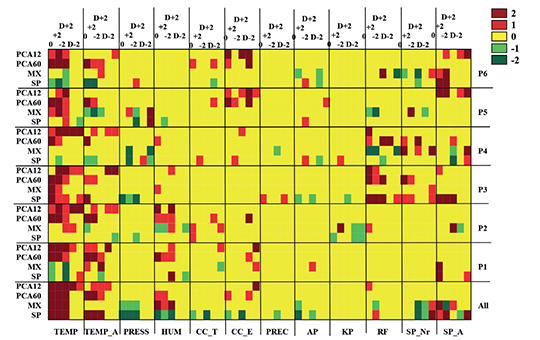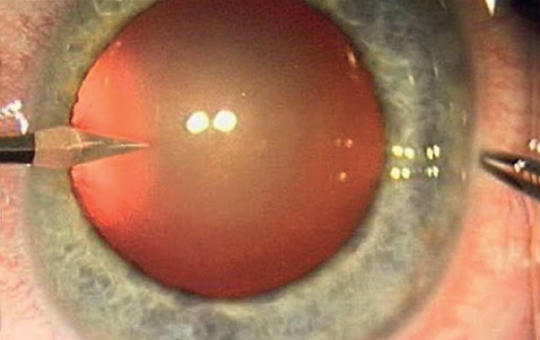The eLitMed.hu medical portal uses computer cookies for convenient operation. Detailed information can be found in the Cookie-policy.
Specialities
Neurology
[Medical and the life history models in clinical psychology ]
[This study presents the dual nature of the classical medical and the more flexible life history model of mental disorders in the last almost two hundred years of psychological way of thinking. One way of basic interpretations considers the mental disorders as an outcome of any kind of disturbed biological functions. Within this classification, some considerations – according to Rokitansky’s pathological doctrine – couple the mental disorders to the disorders of specific anatomical brain structures. The other way of interpretation complies with Claude Bernard’s ideas, thus mental disorders are of regulatory origin. In our days there were emerging strong evolutionary and neurobiological understandings in the biological mental pathology and the key issue is their interrelation. The other way of traditional interpreting mental disorders starts from life history and the constant interpretive work of humans. Our symptoms are based on special meaning and valance having attributed to life events. As a mainstream in this regard, this study presents the works of Sigmund Freud and Karl Jaspers. The conclusion is that biological ad life history interpretations must cooperate for understanding of mental disorders. ]
[Post-stroke spasticity – What to do with it? ]
[The aim of this review is to raise awareness of spasticity in primary care and outpatient settings, since we can provide this way coordinated support to those affected. As the pathomechanism of spasticity is not cleared in all details, the choice of right treatment modalities with different levels of evidence is challenging not only for GPs but also for neurologists and rehabilitation specialists. Poststroke spasticity (PSS) should be considered as a chronic condition that needs continuous follow-up and care. Its therapeutic principles have changed over the last decade. Complex care consists of interdependent elements and only the right use of which provides a better quality of life. These elements are available in Hungary too, but more organised and conscious care should be applied. Primary care workers (doctors, medical assistants, physiotherapists, caregivers, nurses) play an important role in recognising spasticity itself and its negative impact on bodily functions, and in identifying and treating the underlying causes that increase spasticity, most of which are well manageable. Many therapeutic options of complex spasticity could be delegated to the GPs, but in the current funding system, GPs should rather be involved in recognition and choosing the patients’ right pathway. Spasticity is a very common consequence of many diseases, which affect the central nervous system, including the high stroke prevalence too. Thus, it is reasonable that as many as possible professional teams be able to recognise and treat spasticity, and refer it if needed to a centre where more experience and wider therapeutic spectrum are available. Further, it is necessary to increase the number and competence of these centres by regular professional trainings.]
[Female aspects of dementia ]
[Dementia is a new epidemic of the 21st century in all aging societies. Besides old age, female sex is one of the non-modifiable risk factors of dementia. Alzheimer’s disease is responsible for two thirds of all dementia cases, two thirds of which are female patients. This female excess is not seen in other degenerative (such as Lewy body or frontotemporal dementia) conditions or vascular dementias. In the background of this additional risk there are primarily hormonal differences suspected. The later developing menopause decreases the risk of dementia. Albeit, the beneficial role of oestrogen seemed to be verified by animal tests and human data, the hormone replacement therapy has not justified the expectations: its outcomes were clearly without benefits in preventing dementia, thus its administration is not recommended in the clinical practice. These contradictory outcomes may be explained by the time window of hormone replacement therapy, which should be explored by further research programs. This study summarises all aspects of female dementia by narrative review of the concerning literature. ]
Personalized analysis of pain–weather associations: a pilot study
It is a wellknown belief that weather can influence human health, including pain sensation. However, the current data are controversial, which might be due to the wide range of interindividual differences. The present study aimed to characterize the individual pain–weather associations during chronic pain by utilizing several data analytical methods.
[Thrombolysis treatment and multi- disciplinary management of central retinal artery occlusion in comparison with traditional ophthalmological treatment options ]
[The management of central retinal artery occlusion (CRAO) has long been conservative therapy with limited efficacy carried out in ophthalmology departments together with etiological investigations lacking a standardised protocol. However, CRAO is analogous to ischemic central nervous system stroke and is associated with increased stroke risk, thus, systemic thrombolysis treatment and multidisciplinary management can be beneficial. Since May 2022, at Semmelweis University CRAO patients diagnosed within 4.5 hours are given intravenous thrombolysis therapy and undergo etiologic workup based on current stroke protocols. Here we report our experience with the multidisciplinary, protocol-based management of CRAO in comparison with former non-protocol based ophthalmological conservative treatment.
We reviewed CRAO patients’ data treated conservatively and with paracentesis within 6 hours at the Department of Ophthalmology between 2013 and 2022 including changes in visual acuity, neurological and cardiovascular findings compared to those in the thrombolysis project.
Of the 78 patients receiving non-protocol care, visual improvement was seen in 37% with natural course, 47% with conservative treatment and 47% with paracentesis. Four patients had significant carotid stenosis (2 underwent endarterectomy), 1 carotid dissection, 6 cardioembolism and 1 giant cell arteritis. Of the 4 patients within 4,5 hours, 3 gave their consent to the clinical trial and were treated with thrombolysis and underwent a full etiological assessment.
2 patients had improved visual acuity, 2 patients had significant carotid stenosis and underwent endarterectomy, 1 patient was started on anticoagulation for newly diagnosed atrial fibrillation.
CRAO patients presenting within 4,5 hours are rare and more patients are needed in our study to establish the efficacy of thrombolysis. However uniform protocollized evaluation helps identifying embolic sources thus, avoiding further and potentially more serious thromboembolic events.]
Neuropathic pain and mood disorders in earthquake survivors with peripheral nerve injuries
Natural disasters, such as earthquakes, frequently result in mood disorders among affected individuals. It is established that neuropathic pain arising from traumatic neuropathies is also linked to mood disorders. This study investigates the influence of neuropathic pain on the development of mood disorders in earthquake survivors with peripheral nerve injuries, following the earthquake centered in Kahramanmaraş on February 6, 2023.
1.
Clinical Neuroscience
[Headache registry in Szeged: Experiences regarding to migraine patients]2.
Clinical Neuroscience
[The new target population of stroke awareness campaign: Kindergarten students ]3.
Clinical Neuroscience
Is there any difference in mortality rates of atrial fibrillation detected before or after ischemic stroke?4.
Clinical Neuroscience
Factors influencing the level of stigma in Parkinson’s disease in western Turkey5.
Clinical Neuroscience
[The effects of demographic and clinical factors on the severity of poststroke aphasia]1.
2.
Clinical Oncology
[Pancreatic cancer: ESMO Clinical Practice Guideline for diagnosis, treatment and follow-up]3.
Clinical Oncology
[Pharmacovigilance landscape – Lessons from the past and opportunities for future]4.
5.









